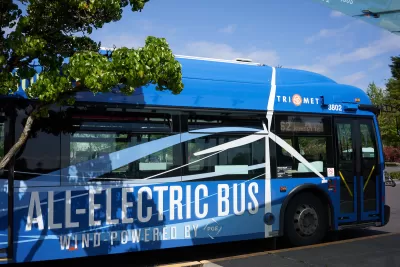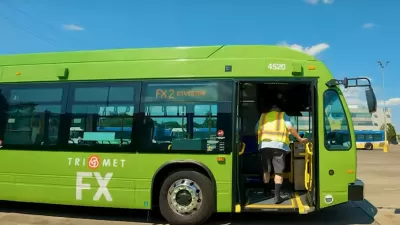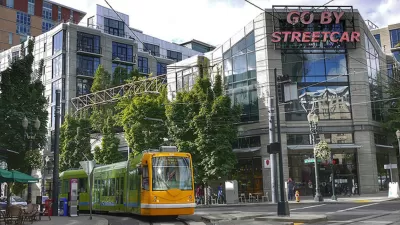The agency’s response to post-pandemic changes in travel behavior is paying off.

Ridership on the Portland-area TriMet transit lines is growing rapidly after the agency launched the Forward Together initiative, a community planning process that sought to understand post-pandemic ridership patterns and coordinate transit across the region to better serve people’s new travel needs and schedules.
According to an article by Jim Redden in the Portland Tribune, “TriMet launched Forward Together in late 2021 with an analysis that aimed at documenting existing travel needs. A series of community meetings were then held throughout the region to better understand the shift in demand. Better serving low-income communities was also declared a priority.” Resulting changes include increased weekend and evening service and increased frequency.
Since early 2023, the agency has made changes to 26 of its 76 bus lines. Ridership on those lines increased by over 17 percent (excluding six lines that had service reduced by the plan), while overall ridership increased by 12 percent. On one line, ridership grew from 400 to 2,550 daily riders thanks to more trips and added weekend service.
FULL STORY: Forward Together changes boosting TriMet bus ridership

Montreal Mall to Become 6,000 Housing Units
Place Versailles will be transformed into a mixed-use complex over the next 25 years.

Planetizen Federal Action Tracker
A weekly monitor of how Trump’s orders and actions are impacting planners and planning in America.

DARTSpace Platform Streamlines Dallas TOD Application Process
The Dallas transit agency hopes a shorter permitting timeline will boost transit-oriented development around rail stations.

Interactive Map Reveals America's “Shade Deserts”
Launched by UCLA and American Forests to combat heat-related deaths, the tool maps the shade infrastructure for over 360 U.S. cities.

Bicycles and Books — In Sacramento, Libraries Now Offer Both
Adult library card holders can check out e-bikes and e-trikes for up to one week.

Colorado Landfills Emit as Much Pollution as 1M Cars
Landfills are the third-largest source of methane pollution in Colorado, after agriculture and fossil fuel extraction.
Urban Design for Planners 1: Software Tools
This six-course series explores essential urban design concepts using open source software and equips planners with the tools they need to participate fully in the urban design process.
Planning for Universal Design
Learn the tools for implementing Universal Design in planning regulations.
City of Mt Shasta
City of Camden Redevelopment Agency
City of Astoria
Transportation Research & Education Center (TREC) at Portland State University
US High Speed Rail Association
City of Camden Redevelopment Agency
Municipality of Princeton (NJ)




























